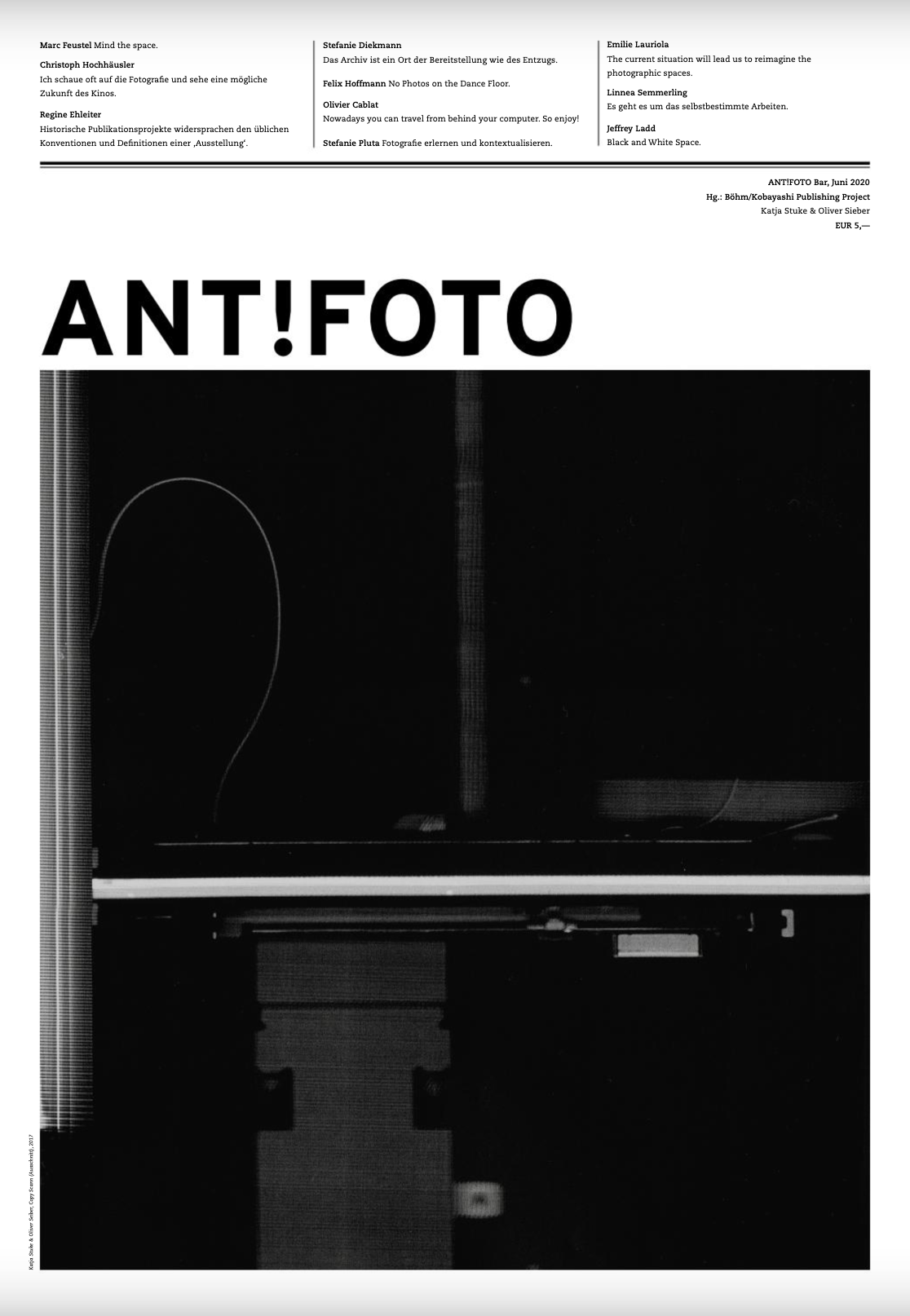Mind the Space
ANT!FOTO, Summer 2020
Extract from my contribution to ANT!FOTO magazine (Summer 2020):
Over the past three months, as the world went into lockdown, I have had the impression of drowning in the digital. My inbox has been even fuller than usual with a constant stream of newsletters from museums, galleries, publishers, bookshops and artists reaching out to their communities. Many of these have been sincere and heartfelt messages of concern for others and the uncertain future that lies ahead of us. Everyone began broadcasting too—Zoom lecturing and Instagram Live-ing alongside all the video-socializing that we tried to do despite the Internet being on the verge of collapsing.
…
Beyond the small world of photobooks, it was fascinating to see the cultural value that is still attributed to the book. Selfies gave way to #bookshelfies and in the age of the Zoom backdrop the tomes on our bookshelves became a way of letting the world know who we are. There was even a Twitter account (@bookcredibility) created during the crisis—its strapline: “What you say is not as important as the bookcase behind you”—that provides cutting analysis of the cultural credibility grabs of the bookshelf backdrops of the talking heads on TV news.
Beyond photobooks, over time I found myself thinking more and more of the spaces that we no longer have access to. My mind went not so much to the “institutional” spaces—museums, art foundations, commercial galleries—that form the backbone of the photography world, but rather to those informal spaces which play a smaller, often less explicit role, but which are crucial in fostering a sense of community and in keeping the small world of photography alive.
While the spaces in my hometown came to mind —le Plac’Art Photo, Le Bal Books, La Comète—my thoughts also drifted to Tokyo, where there is a wider variety of these kinds of spaces than in any other city I know. Given the city’s highly fragmented art scene, many photography galleries and publishers tend to have tight-knit communities that gravitate around them and that function as much as exhibition spaces or bookstores as they do community centres. Some of these spaces are surprising, like Kurenboh a minuscule gallery that is housed in a Buddhist temple. Run by Aki Taniguchi, a Buddhist monk and a former student of the American photographer and curator Leo Rubinfien, Kurenboh holds exhibitions in a tiny, perfectly designed “meditation gallery” that can only accommodate one or two people at a time. There is Kodoji, too, a minuscule bar in the Golden Gai district that has become a rite of passage for any photography enthusiast passing through Tokyo and, in addition to being visibly coated in layer upon layer of photographic history, is the smallest exhibition space I know. Or one of the city’s last remaining photography labs which, formerly housed in a spacious factory, has somehow been squeezed into an anonymous residential apartment block where some of the best printers in the country from the last fifty years still work. While they are all very different, what these spaces share is an ability to create community, not through organized events or broad audiences but by providing people with a place to come and pass the time around something they love. It is the spontaneity provided by such spaces that I have missed the most over the past two months.
Just as confinement has transformed our access to and relationship to space, it has also wreaked havoc with our sense of time. Some days feel interminable while others just slip through our fingers. I have found that my aversion to digital spaces has also been driven by a need to slow down and be more purposeful with my attention.
